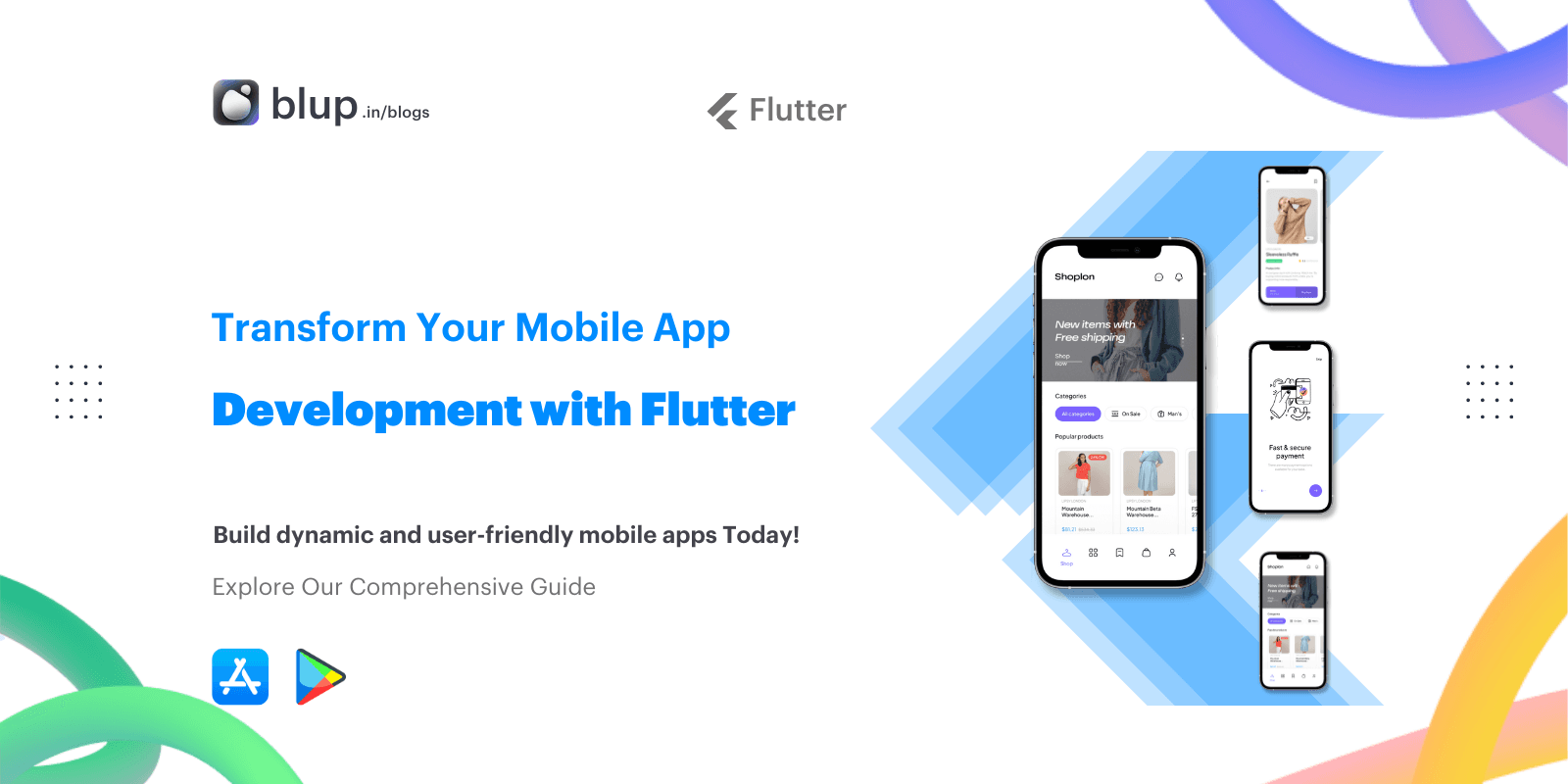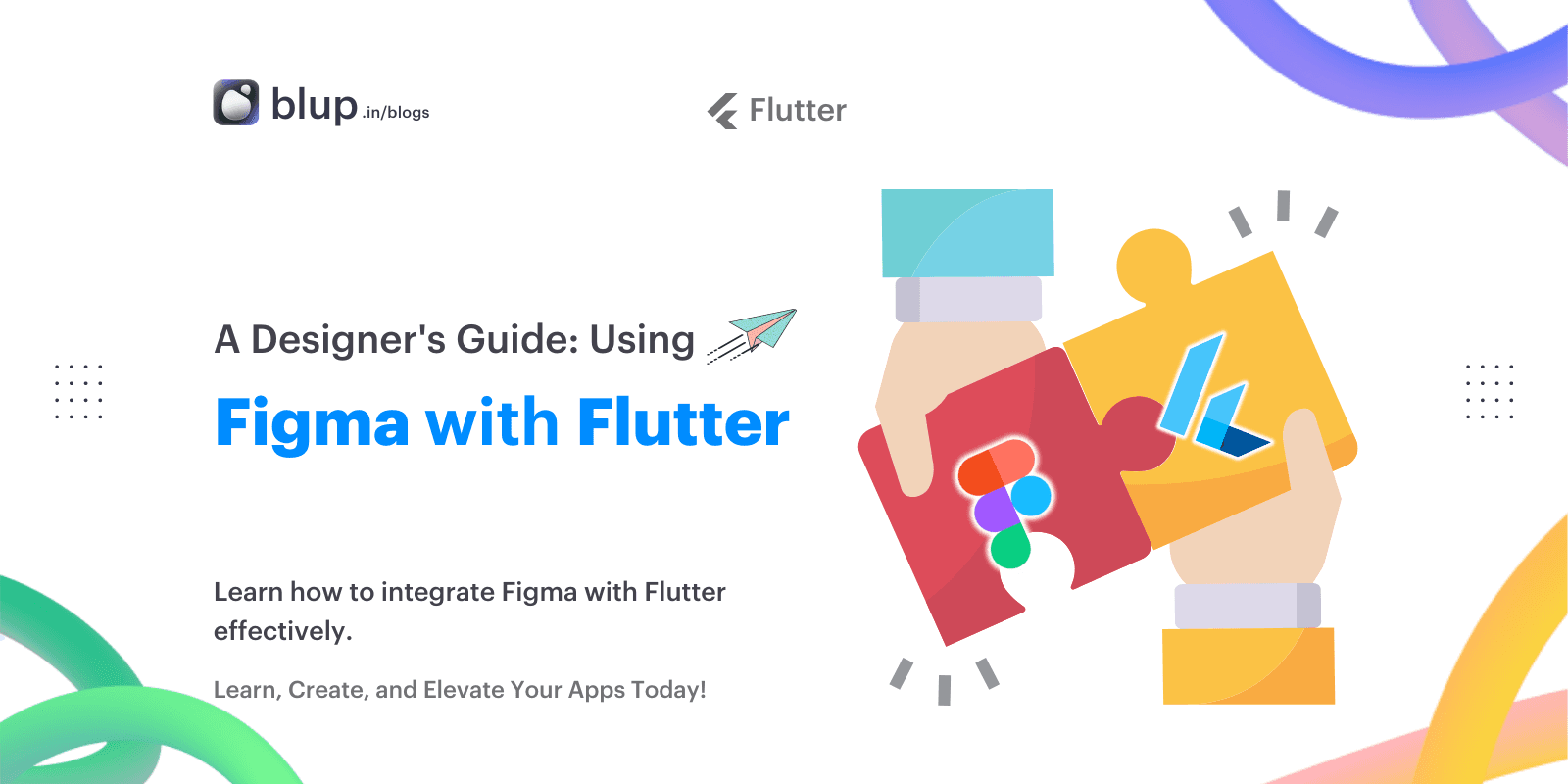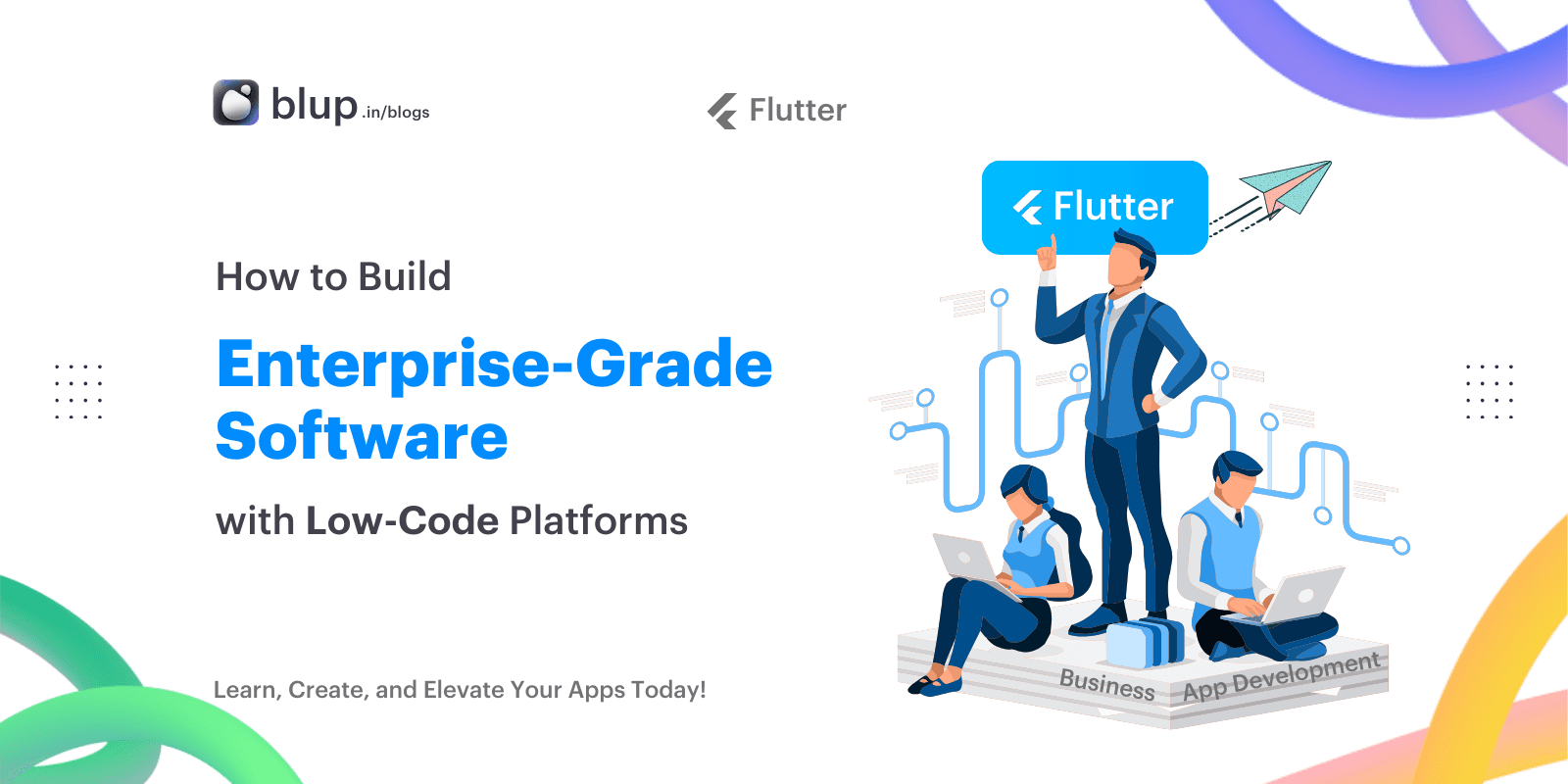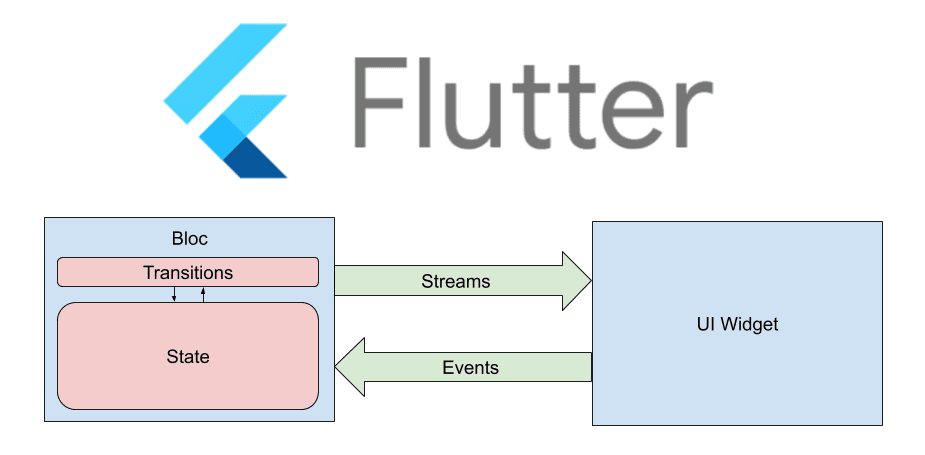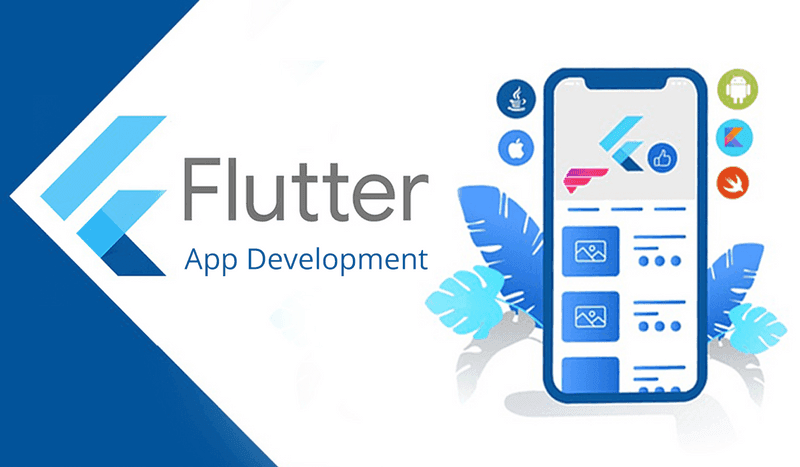Case Study: Successful Low-Cost App Development Projects.


Introduction
Introduction
Introduction
Introduction
In today’s highly competitive market, app development has become essential for businesses of all sizes. However, developing a high-quality app can be costly, posing significant challenges for startups and small businesses with limited budgets. Low-cost app development strategies offer a viable solution, enabling these entities to create effective applications without breaking the bank.
This blog explores successful case studies demonstrating how low-cost app development strategies can be implemented effectively. By examining these examples, we aim to provide insights and practical tips for startups and small businesses looking to develop apps on a budget.
The Need for Low-cost App Development
Fact: According to Clutch, the average cost to develop an app ranges from $30,000 to $150,000.
Fact: 90% of startups fail due to cash flow problems, making cost-effective solutions crucial.
People Also Asked
What is the cheapest way to develop an app?
Utilizing open-source tools, outsourcing to affordable regions, and starting with an MVP are cost-effective strategies.
How can small businesses afford app development?
Small businesses can afford app development by focusing on essential features, leveraging low-cost development teams, and using cost-effective tools.
Are there successful examples of low-cost app development?
Numerous startups and small businesses have successfully developed apps on a budget by implementing strategic cost-saving measures ref. madeinBlup.
This blog explores successful case studies demonstrating how low-cost app development strategies can be implemented effectively. By examining these examples, we aim to provide insights and practical tips for startups and small businesses looking to develop apps on a budget.
In today’s highly competitive market, app development has become essential for businesses of all sizes. However, developing a high-quality app can be costly, posing significant challenges for startups and small businesses with limited budgets. Low-cost app development strategies offer a viable solution, enabling these entities to create effective applications without breaking the bank.
This blog explores successful case studies demonstrating how low-cost app development strategies can be implemented effectively. By examining these examples, we aim to provide insights and practical tips for startups and small businesses looking to develop apps on a budget.
The Need for Low-cost App Development
Fact: According to Clutch, the average cost to develop an app ranges from $30,000 to $150,000.
Fact: 90% of startups fail due to cash flow problems, making cost-effective solutions crucial.
People Also Asked
What is the cheapest way to develop an app?
Utilizing open-source tools, outsourcing to affordable regions, and starting with an MVP are cost-effective strategies.
How can small businesses afford app development?
Small businesses can afford app development by focusing on essential features, leveraging low-cost development teams, and using cost-effective tools.
Are there successful examples of low-cost app development?
Numerous startups and small businesses have successfully developed apps on a budget by implementing strategic cost-saving measures ref. madeinBlup.
This blog explores successful case studies demonstrating how low-cost app development strategies can be implemented effectively. By examining these examples, we aim to provide insights and practical tips for startups and small businesses looking to develop apps on a budget.
In today’s highly competitive market, app development has become essential for businesses of all sizes. However, developing a high-quality app can be costly, posing significant challenges for startups and small businesses with limited budgets. Low-cost app development strategies offer a viable solution, enabling these entities to create effective applications without breaking the bank.
This blog explores successful case studies demonstrating how low-cost app development strategies can be implemented effectively. By examining these examples, we aim to provide insights and practical tips for startups and small businesses looking to develop apps on a budget.
The Need for Low-cost App Development
Fact: According to Clutch, the average cost to develop an app ranges from $30,000 to $150,000.
Fact: 90% of startups fail due to cash flow problems, making cost-effective solutions crucial.
People Also Asked
What is the cheapest way to develop an app?
Utilizing open-source tools, outsourcing to affordable regions, and starting with an MVP are cost-effective strategies.
How can small businesses afford app development?
Small businesses can afford app development by focusing on essential features, leveraging low-cost development teams, and using cost-effective tools.
Are there successful examples of low-cost app development?
Numerous startups and small businesses have successfully developed apps on a budget by implementing strategic cost-saving measures ref. madeinBlup.
This blog explores successful case studies demonstrating how low-cost app development strategies can be implemented effectively. By examining these examples, we aim to provide insights and practical tips for startups and small businesses looking to develop apps on a budget.
In today’s highly competitive market, app development has become essential for businesses of all sizes. However, developing a high-quality app can be costly, posing significant challenges for startups and small businesses with limited budgets. Low-cost app development strategies offer a viable solution, enabling these entities to create effective applications without breaking the bank.
This blog explores successful case studies demonstrating how low-cost app development strategies can be implemented effectively. By examining these examples, we aim to provide insights and practical tips for startups and small businesses looking to develop apps on a budget.
The Need for Low-cost App Development
Fact: According to Clutch, the average cost to develop an app ranges from $30,000 to $150,000.
Fact: 90% of startups fail due to cash flow problems, making cost-effective solutions crucial.
People Also Asked
What is the cheapest way to develop an app?
Utilizing open-source tools, outsourcing to affordable regions, and starting with an MVP are cost-effective strategies.
How can small businesses afford app development?
Small businesses can afford app development by focusing on essential features, leveraging low-cost development teams, and using cost-effective tools.
Are there successful examples of low-cost app development?
Numerous startups and small businesses have successfully developed apps on a budget by implementing strategic cost-saving measures ref. madeinBlup.
This blog explores successful case studies demonstrating how low-cost app development strategies can be implemented effectively. By examining these examples, we aim to provide insights and practical tips for startups and small businesses looking to develop apps on a budget.
Criteria for Successful Low-Cost App Development
Criteria for Successful Low-Cost App Development
Criteria for Successful Low-Cost App Development
Criteria for Successful Low-Cost App Development
Key Factors
Simplicity vs. Complexity
Balancing simplicity and complexity is crucial in low-cost app development. While it might be tempting to include numerous features, focusing on core functionalities can significantly reduce costs and development time. A lean approach ensures the app meets essential needs without unnecessary expenditure.
Resource Utilization
Efficient use of resources is vital for keeping costs down. This includes choosing the right technology stack, leveraging open-source tools, and utilizing the skills of a versatile development team. Smart resource allocation can greatly enhance cost efficiency and productivity.
Iterative Development
Adopting agile methodologies and continuous improvement processes allows for iterative development. This approach optimizes development costs and ensures that the app evolves based on user feedback and market trends. By releasing incremental updates, developers can respond to user needs promptly, improving the app's functionality and user experience over time.
Tips for Effective Low-Cost App Development
Prioritize Features: Focus on essential features that provide the most value to users.
Leverage Community Resources: Utilize free or low-cost resources available in developer communities.
Frequent Testing: Regular testing helps identify issues early, reducing costly fixes later.
Stay Updated: Keep abreast of the latest development tools and trends to maintain cost efficiency.
Examples
Minimalist Design: An app with a clean, minimalist design that focuses on core functionality, reducing development and maintenance costs.
Open-source Tools: Using open-source libraries and frameworks to avoid licensing fees and benefit from community support.
User Feedback Loop: Implementing a feedback loop to gather user insights and make iterative improvements, ensuring the app meets market demands effectively.
By understanding and applying these key factors, startups, and small businesses can successfully develop high-quality apps within a limited budget, ensuring both functionality and user satisfaction.
Key Factors
Simplicity vs. Complexity
Balancing simplicity and complexity is crucial in low-cost app development. While it might be tempting to include numerous features, focusing on core functionalities can significantly reduce costs and development time. A lean approach ensures the app meets essential needs without unnecessary expenditure.
Resource Utilization
Efficient use of resources is vital for keeping costs down. This includes choosing the right technology stack, leveraging open-source tools, and utilizing the skills of a versatile development team. Smart resource allocation can greatly enhance cost efficiency and productivity.
Iterative Development
Adopting agile methodologies and continuous improvement processes allows for iterative development. This approach optimizes development costs and ensures that the app evolves based on user feedback and market trends. By releasing incremental updates, developers can respond to user needs promptly, improving the app's functionality and user experience over time.
Tips for Effective Low-Cost App Development
Prioritize Features: Focus on essential features that provide the most value to users.
Leverage Community Resources: Utilize free or low-cost resources available in developer communities.
Frequent Testing: Regular testing helps identify issues early, reducing costly fixes later.
Stay Updated: Keep abreast of the latest development tools and trends to maintain cost efficiency.
Examples
Minimalist Design: An app with a clean, minimalist design that focuses on core functionality, reducing development and maintenance costs.
Open-source Tools: Using open-source libraries and frameworks to avoid licensing fees and benefit from community support.
User Feedback Loop: Implementing a feedback loop to gather user insights and make iterative improvements, ensuring the app meets market demands effectively.
By understanding and applying these key factors, startups, and small businesses can successfully develop high-quality apps within a limited budget, ensuring both functionality and user satisfaction.
Key Factors
Simplicity vs. Complexity
Balancing simplicity and complexity is crucial in low-cost app development. While it might be tempting to include numerous features, focusing on core functionalities can significantly reduce costs and development time. A lean approach ensures the app meets essential needs without unnecessary expenditure.
Resource Utilization
Efficient use of resources is vital for keeping costs down. This includes choosing the right technology stack, leveraging open-source tools, and utilizing the skills of a versatile development team. Smart resource allocation can greatly enhance cost efficiency and productivity.
Iterative Development
Adopting agile methodologies and continuous improvement processes allows for iterative development. This approach optimizes development costs and ensures that the app evolves based on user feedback and market trends. By releasing incremental updates, developers can respond to user needs promptly, improving the app's functionality and user experience over time.
Tips for Effective Low-Cost App Development
Prioritize Features: Focus on essential features that provide the most value to users.
Leverage Community Resources: Utilize free or low-cost resources available in developer communities.
Frequent Testing: Regular testing helps identify issues early, reducing costly fixes later.
Stay Updated: Keep abreast of the latest development tools and trends to maintain cost efficiency.
Examples
Minimalist Design: An app with a clean, minimalist design that focuses on core functionality, reducing development and maintenance costs.
Open-source Tools: Using open-source libraries and frameworks to avoid licensing fees and benefit from community support.
User Feedback Loop: Implementing a feedback loop to gather user insights and make iterative improvements, ensuring the app meets market demands effectively.
By understanding and applying these key factors, startups, and small businesses can successfully develop high-quality apps within a limited budget, ensuring both functionality and user satisfaction.
Key Factors
Simplicity vs. Complexity
Balancing simplicity and complexity is crucial in low-cost app development. While it might be tempting to include numerous features, focusing on core functionalities can significantly reduce costs and development time. A lean approach ensures the app meets essential needs without unnecessary expenditure.
Resource Utilization
Efficient use of resources is vital for keeping costs down. This includes choosing the right technology stack, leveraging open-source tools, and utilizing the skills of a versatile development team. Smart resource allocation can greatly enhance cost efficiency and productivity.
Iterative Development
Adopting agile methodologies and continuous improvement processes allows for iterative development. This approach optimizes development costs and ensures that the app evolves based on user feedback and market trends. By releasing incremental updates, developers can respond to user needs promptly, improving the app's functionality and user experience over time.
Tips for Effective Low-Cost App Development
Prioritize Features: Focus on essential features that provide the most value to users.
Leverage Community Resources: Utilize free or low-cost resources available in developer communities.
Frequent Testing: Regular testing helps identify issues early, reducing costly fixes later.
Stay Updated: Keep abreast of the latest development tools and trends to maintain cost efficiency.
Examples
Minimalist Design: An app with a clean, minimalist design that focuses on core functionality, reducing development and maintenance costs.
Open-source Tools: Using open-source libraries and frameworks to avoid licensing fees and benefit from community support.
User Feedback Loop: Implementing a feedback loop to gather user insights and make iterative improvements, ensuring the app meets market demands effectively.
By understanding and applying these key factors, startups, and small businesses can successfully develop high-quality apps within a limited budget, ensuring both functionality and user satisfaction.
Case Study 1: Trucker Link
Case Study 1: Trucker Link
Case Study 1: Trucker Link
Case Study 1: Trucker Link
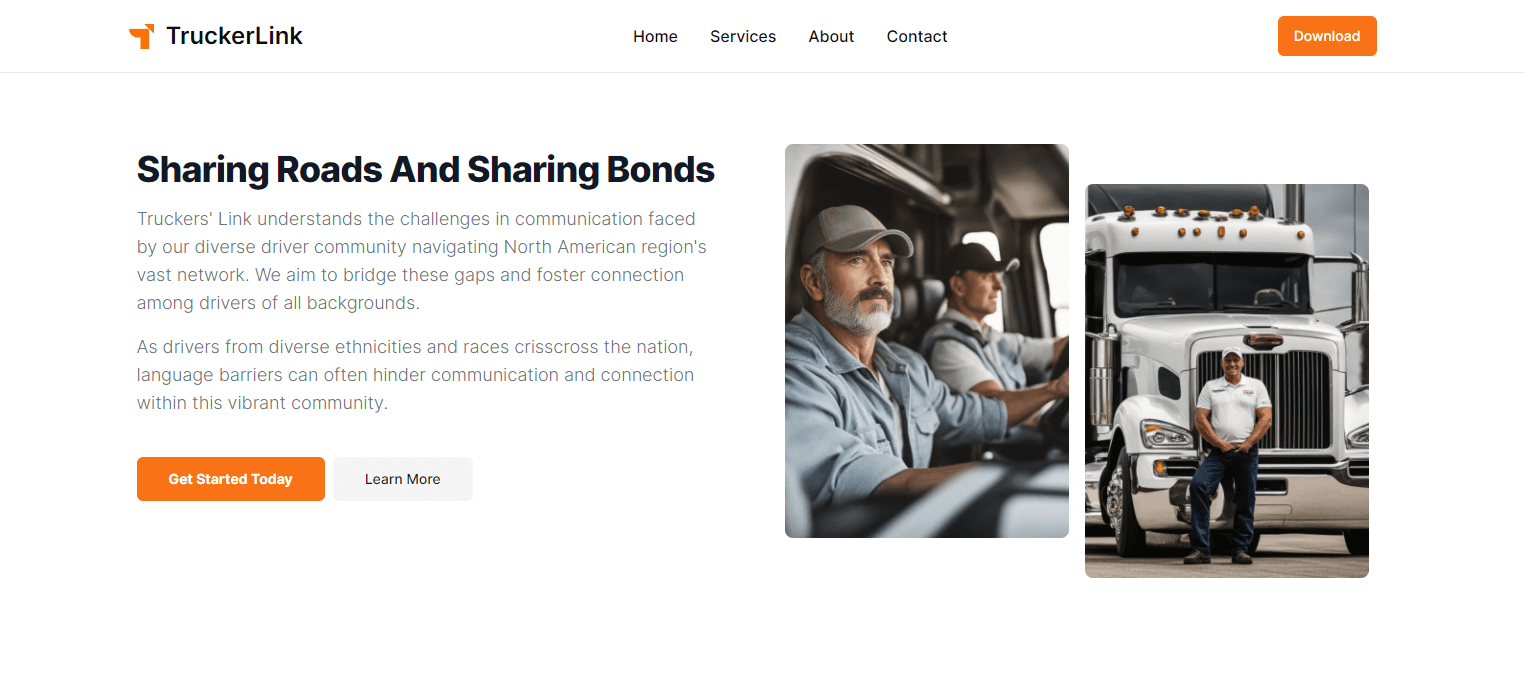
Overview
Background
Trucker Link is an app designed to connect truck drivers with freight companies, streamlining the process of finding and booking loads. The target audience includes independent truck drivers and small to medium-sized freight companies.
Development Challenges
Trucker Link faced significant budget constraints and resource limitations at the outset. The challenge was to develop a fully functional app that met the needs of its users without exceeding the available budget.
Approach and Solutions
Development Strategy
The team adopted a Minimum Viable Product (MVP) approach, focusing on developing the essential features required to solve the core problem. This strategy allowed them to launch quickly and start gathering user feedback early in the process.
Cost-Cutting Measures
Open-Source Tools: Utilized open-source development tools and frameworks to reduce licensing costs.
Remote Team: Employed a remote development team, cutting down on office space and related expenses.
Lean Development: Implemented lean development principles, prioritizing features based on user feedback and business impact.
Results and Impact
Outcome
Post-launch, Trucker Link saw impressive user adoption rates, with a 50% increase in registered users within the first three months. The app effectively addressed the needs of its target audience, leading to high user satisfaction.
Business Impact
The successful deployment of Trucker Link significantly contributed to the business's growth. The app enhanced the operational efficiency of freight companies and provided truck drivers with a reliable platform to find jobs, thereby increasing overall market engagement.

Overview
Background
Trucker Link is an app designed to connect truck drivers with freight companies, streamlining the process of finding and booking loads. The target audience includes independent truck drivers and small to medium-sized freight companies.
Development Challenges
Trucker Link faced significant budget constraints and resource limitations at the outset. The challenge was to develop a fully functional app that met the needs of its users without exceeding the available budget.
Approach and Solutions
Development Strategy
The team adopted a Minimum Viable Product (MVP) approach, focusing on developing the essential features required to solve the core problem. This strategy allowed them to launch quickly and start gathering user feedback early in the process.
Cost-Cutting Measures
Open-Source Tools: Utilized open-source development tools and frameworks to reduce licensing costs.
Remote Team: Employed a remote development team, cutting down on office space and related expenses.
Lean Development: Implemented lean development principles, prioritizing features based on user feedback and business impact.
Results and Impact
Outcome
Post-launch, Trucker Link saw impressive user adoption rates, with a 50% increase in registered users within the first three months. The app effectively addressed the needs of its target audience, leading to high user satisfaction.
Business Impact
The successful deployment of Trucker Link significantly contributed to the business's growth. The app enhanced the operational efficiency of freight companies and provided truck drivers with a reliable platform to find jobs, thereby increasing overall market engagement.

Overview
Background
Trucker Link is an app designed to connect truck drivers with freight companies, streamlining the process of finding and booking loads. The target audience includes independent truck drivers and small to medium-sized freight companies.
Development Challenges
Trucker Link faced significant budget constraints and resource limitations at the outset. The challenge was to develop a fully functional app that met the needs of its users without exceeding the available budget.
Approach and Solutions
Development Strategy
The team adopted a Minimum Viable Product (MVP) approach, focusing on developing the essential features required to solve the core problem. This strategy allowed them to launch quickly and start gathering user feedback early in the process.
Cost-Cutting Measures
Open-Source Tools: Utilized open-source development tools and frameworks to reduce licensing costs.
Remote Team: Employed a remote development team, cutting down on office space and related expenses.
Lean Development: Implemented lean development principles, prioritizing features based on user feedback and business impact.
Results and Impact
Outcome
Post-launch, Trucker Link saw impressive user adoption rates, with a 50% increase in registered users within the first three months. The app effectively addressed the needs of its target audience, leading to high user satisfaction.
Business Impact
The successful deployment of Trucker Link significantly contributed to the business's growth. The app enhanced the operational efficiency of freight companies and provided truck drivers with a reliable platform to find jobs, thereby increasing overall market engagement.

Overview
Background
Trucker Link is an app designed to connect truck drivers with freight companies, streamlining the process of finding and booking loads. The target audience includes independent truck drivers and small to medium-sized freight companies.
Development Challenges
Trucker Link faced significant budget constraints and resource limitations at the outset. The challenge was to develop a fully functional app that met the needs of its users without exceeding the available budget.
Approach and Solutions
Development Strategy
The team adopted a Minimum Viable Product (MVP) approach, focusing on developing the essential features required to solve the core problem. This strategy allowed them to launch quickly and start gathering user feedback early in the process.
Cost-Cutting Measures
Open-Source Tools: Utilized open-source development tools and frameworks to reduce licensing costs.
Remote Team: Employed a remote development team, cutting down on office space and related expenses.
Lean Development: Implemented lean development principles, prioritizing features based on user feedback and business impact.
Results and Impact
Outcome
Post-launch, Trucker Link saw impressive user adoption rates, with a 50% increase in registered users within the first three months. The app effectively addressed the needs of its target audience, leading to high user satisfaction.
Business Impact
The successful deployment of Trucker Link significantly contributed to the business's growth. The app enhanced the operational efficiency of freight companies and provided truck drivers with a reliable platform to find jobs, thereby increasing overall market engagement.
Case Study 2: Kode Blue
Case Study 2: Kode Blue
Case Study 2: Kode Blue
Case Study 2: Kode Blue
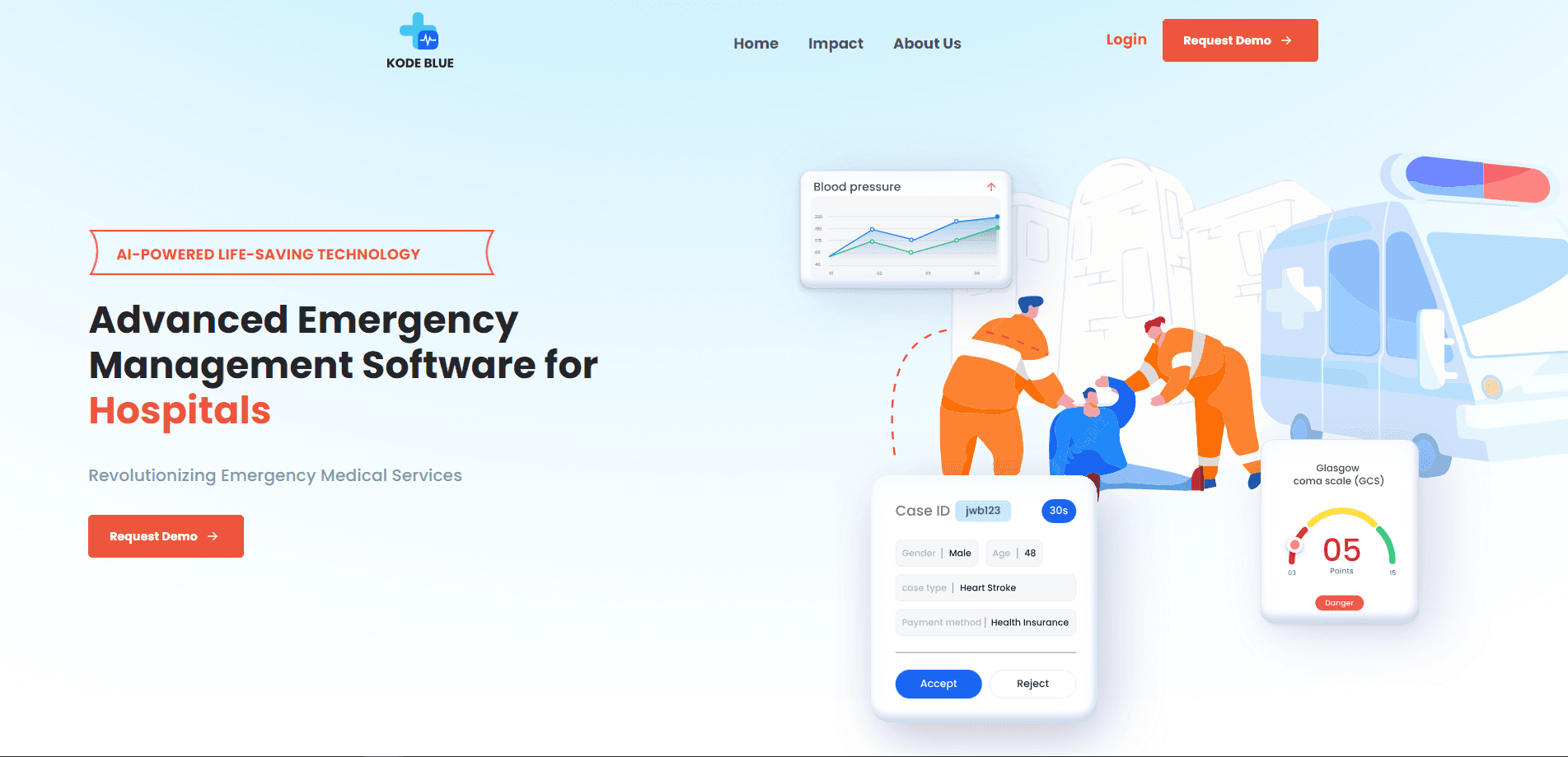
Overview
Background
Kode Blue is an app aimed at providing emergency medical services. The target audience includes hospitals, emergency responders, and individuals in need of immediate medical assistance.
Unique Challenges
Unlike Trucker Link, Kode Blue faced the challenge of integrating with various medical databases and ensuring real-time communication between users and medical professionals. Budget constraints further complicated these technical requirements.
Approach and Solutions
Adapted Strategies
To meet these challenges, the development team modified their approach by focusing on modular development. They built and tested each module independently before integrating them, ensuring that each part of the app functioned correctly before combining them into a complete solution.
Innovative Solutions
Cloud Services: Leveraged cloud-based services for data storage and real-time communication, reducing the need for expensive on-premise infrastructure.
Partnerships: Formed strategic partnerships with medical institutions to gain access to necessary data and resources without incurring high costs.
Community Involvement: Engaged with the medical community to gather feedback and ensure the app met the practical needs of its users.
Results and Impact
Project Outcomes
Kode Blue achieved remarkable success, with user feedback indicating high levels of satisfaction. The app's deployment led to a 40% reduction in response times for emergency services, significantly improving patient outcomes.
Long-Term Benefits
The long-term benefits of Kode Blue include sustainable improvements in emergency medical response efficiency and enhanced collaboration between medical professionals and emergency responders. The app continues to evolve, incorporating new features based on ongoing user feedback.

Overview
Background
Kode Blue is an app aimed at providing emergency medical services. The target audience includes hospitals, emergency responders, and individuals in need of immediate medical assistance.
Unique Challenges
Unlike Trucker Link, Kode Blue faced the challenge of integrating with various medical databases and ensuring real-time communication between users and medical professionals. Budget constraints further complicated these technical requirements.
Approach and Solutions
Adapted Strategies
To meet these challenges, the development team modified their approach by focusing on modular development. They built and tested each module independently before integrating them, ensuring that each part of the app functioned correctly before combining them into a complete solution.
Innovative Solutions
Cloud Services: Leveraged cloud-based services for data storage and real-time communication, reducing the need for expensive on-premise infrastructure.
Partnerships: Formed strategic partnerships with medical institutions to gain access to necessary data and resources without incurring high costs.
Community Involvement: Engaged with the medical community to gather feedback and ensure the app met the practical needs of its users.
Results and Impact
Project Outcomes
Kode Blue achieved remarkable success, with user feedback indicating high levels of satisfaction. The app's deployment led to a 40% reduction in response times for emergency services, significantly improving patient outcomes.
Long-Term Benefits
The long-term benefits of Kode Blue include sustainable improvements in emergency medical response efficiency and enhanced collaboration between medical professionals and emergency responders. The app continues to evolve, incorporating new features based on ongoing user feedback.

Overview
Background
Kode Blue is an app aimed at providing emergency medical services. The target audience includes hospitals, emergency responders, and individuals in need of immediate medical assistance.
Unique Challenges
Unlike Trucker Link, Kode Blue faced the challenge of integrating with various medical databases and ensuring real-time communication between users and medical professionals. Budget constraints further complicated these technical requirements.
Approach and Solutions
Adapted Strategies
To meet these challenges, the development team modified their approach by focusing on modular development. They built and tested each module independently before integrating them, ensuring that each part of the app functioned correctly before combining them into a complete solution.
Innovative Solutions
Cloud Services: Leveraged cloud-based services for data storage and real-time communication, reducing the need for expensive on-premise infrastructure.
Partnerships: Formed strategic partnerships with medical institutions to gain access to necessary data and resources without incurring high costs.
Community Involvement: Engaged with the medical community to gather feedback and ensure the app met the practical needs of its users.
Results and Impact
Project Outcomes
Kode Blue achieved remarkable success, with user feedback indicating high levels of satisfaction. The app's deployment led to a 40% reduction in response times for emergency services, significantly improving patient outcomes.
Long-Term Benefits
The long-term benefits of Kode Blue include sustainable improvements in emergency medical response efficiency and enhanced collaboration between medical professionals and emergency responders. The app continues to evolve, incorporating new features based on ongoing user feedback.

Overview
Background
Kode Blue is an app aimed at providing emergency medical services. The target audience includes hospitals, emergency responders, and individuals in need of immediate medical assistance.
Unique Challenges
Unlike Trucker Link, Kode Blue faced the challenge of integrating with various medical databases and ensuring real-time communication between users and medical professionals. Budget constraints further complicated these technical requirements.
Approach and Solutions
Adapted Strategies
To meet these challenges, the development team modified their approach by focusing on modular development. They built and tested each module independently before integrating them, ensuring that each part of the app functioned correctly before combining them into a complete solution.
Innovative Solutions
Cloud Services: Leveraged cloud-based services for data storage and real-time communication, reducing the need for expensive on-premise infrastructure.
Partnerships: Formed strategic partnerships with medical institutions to gain access to necessary data and resources without incurring high costs.
Community Involvement: Engaged with the medical community to gather feedback and ensure the app met the practical needs of its users.
Results and Impact
Project Outcomes
Kode Blue achieved remarkable success, with user feedback indicating high levels of satisfaction. The app's deployment led to a 40% reduction in response times for emergency services, significantly improving patient outcomes.
Long-Term Benefits
The long-term benefits of Kode Blue include sustainable improvements in emergency medical response efficiency and enhanced collaboration between medical professionals and emergency responders. The app continues to evolve, incorporating new features based on ongoing user feedback.
Key Takeaways from Case Studies
Key Takeaways from Case Studies
Key Takeaways from Case Studies
Key Takeaways from Case Studies
Lessons Learned
Common Strategies
Both case studies highlight the importance of starting with an MVP, using open-source tools, and focusing on core functionalities. These strategies are critical in reducing costs and ensuring a successful launch.
Best Practices
User-Centric Design: Prioritize features that address the most pressing needs of your target audience.
Iterative Feedback: Continuously gather and implement user feedback to improve the app.
Strategic Partnerships: Leverage partnerships to access resources and data without incurring high costs.
Lessons Learned
Common Strategies
Both case studies highlight the importance of starting with an MVP, using open-source tools, and focusing on core functionalities. These strategies are critical in reducing costs and ensuring a successful launch.
Best Practices
User-Centric Design: Prioritize features that address the most pressing needs of your target audience.
Iterative Feedback: Continuously gather and implement user feedback to improve the app.
Strategic Partnerships: Leverage partnerships to access resources and data without incurring high costs.
Lessons Learned
Common Strategies
Both case studies highlight the importance of starting with an MVP, using open-source tools, and focusing on core functionalities. These strategies are critical in reducing costs and ensuring a successful launch.
Best Practices
User-Centric Design: Prioritize features that address the most pressing needs of your target audience.
Iterative Feedback: Continuously gather and implement user feedback to improve the app.
Strategic Partnerships: Leverage partnerships to access resources and data without incurring high costs.
Lessons Learned
Common Strategies
Both case studies highlight the importance of starting with an MVP, using open-source tools, and focusing on core functionalities. These strategies are critical in reducing costs and ensuring a successful launch.
Best Practices
User-Centric Design: Prioritize features that address the most pressing needs of your target audience.
Iterative Feedback: Continuously gather and implement user feedback to improve the app.
Strategic Partnerships: Leverage partnerships to access resources and data without incurring high costs.
Challenges and Considerations
Challenges and Considerations
Challenges and Considerations
Challenges and Considerations
Potential Challenges
Technical Limitations
Budget constraints often lead to technical limitations. It's essential to carefully consider which features are crucial and which can be deferred or simplified.
Resource Allocation
Efficiently allocating resources, both human and technological, is vital for maintaining budget constraints. Ensuring that your team is versatile and multi-skilled can help mitigate resource limitations.
Mitigation Strategies
Risk Management
Implement risk management strategies to anticipate and address potential challenges. This includes having contingency plans and flexible timelines.
Flexibility and Adaptability
Maintaining flexibility in your development approach allows you to adapt to changing project requirements and market dynamics. Being open to pivoting or modifying your app based on user feedback can lead to more successful outcomes.
Potential Challenges
Technical Limitations
Budget constraints often lead to technical limitations. It's essential to carefully consider which features are crucial and which can be deferred or simplified.
Resource Allocation
Efficiently allocating resources, both human and technological, is vital for maintaining budget constraints. Ensuring that your team is versatile and multi-skilled can help mitigate resource limitations.
Mitigation Strategies
Risk Management
Implement risk management strategies to anticipate and address potential challenges. This includes having contingency plans and flexible timelines.
Flexibility and Adaptability
Maintaining flexibility in your development approach allows you to adapt to changing project requirements and market dynamics. Being open to pivoting or modifying your app based on user feedback can lead to more successful outcomes.
Potential Challenges
Technical Limitations
Budget constraints often lead to technical limitations. It's essential to carefully consider which features are crucial and which can be deferred or simplified.
Resource Allocation
Efficiently allocating resources, both human and technological, is vital for maintaining budget constraints. Ensuring that your team is versatile and multi-skilled can help mitigate resource limitations.
Mitigation Strategies
Risk Management
Implement risk management strategies to anticipate and address potential challenges. This includes having contingency plans and flexible timelines.
Flexibility and Adaptability
Maintaining flexibility in your development approach allows you to adapt to changing project requirements and market dynamics. Being open to pivoting or modifying your app based on user feedback can lead to more successful outcomes.
Potential Challenges
Technical Limitations
Budget constraints often lead to technical limitations. It's essential to carefully consider which features are crucial and which can be deferred or simplified.
Resource Allocation
Efficiently allocating resources, both human and technological, is vital for maintaining budget constraints. Ensuring that your team is versatile and multi-skilled can help mitigate resource limitations.
Mitigation Strategies
Risk Management
Implement risk management strategies to anticipate and address potential challenges. This includes having contingency plans and flexible timelines.
Flexibility and Adaptability
Maintaining flexibility in your development approach allows you to adapt to changing project requirements and market dynamics. Being open to pivoting or modifying your app based on user feedback can lead to more successful outcomes.
Future Outlook for Low-Cost App Development
Future Outlook for Low-Cost App Development
Future Outlook for Low-Cost App Development
Future Outlook for Low-Cost App Development
Emerging Trends
Technological Advancements
Emerging technologies such as artificial intelligence, machine learning, and blockchain are becoming more accessible, offering new opportunities to reduce development costs.
Market Trends
The demand for cost-effective app solutions is expected to grow across various industries. Businesses will increasingly look for ways to develop apps that provide maximum value with minimal investment.
Emerging Trends
Technological Advancements
Emerging technologies such as artificial intelligence, machine learning, and blockchain are becoming more accessible, offering new opportunities to reduce development costs.
Market Trends
The demand for cost-effective app solutions is expected to grow across various industries. Businesses will increasingly look for ways to develop apps that provide maximum value with minimal investment.
Emerging Trends
Technological Advancements
Emerging technologies such as artificial intelligence, machine learning, and blockchain are becoming more accessible, offering new opportunities to reduce development costs.
Market Trends
The demand for cost-effective app solutions is expected to grow across various industries. Businesses will increasingly look for ways to develop apps that provide maximum value with minimal investment.
Emerging Trends
Technological Advancements
Emerging technologies such as artificial intelligence, machine learning, and blockchain are becoming more accessible, offering new opportunities to reduce development costs.
Market Trends
The demand for cost-effective app solutions is expected to grow across various industries. Businesses will increasingly look for ways to develop apps that provide maximum value with minimal investment.
Leveraging Low-Code Development with Blup
Leveraging Low-Code Development with Blup
Leveraging Low-Code Development with Blup
Leveraging Low-Code Development with Blup
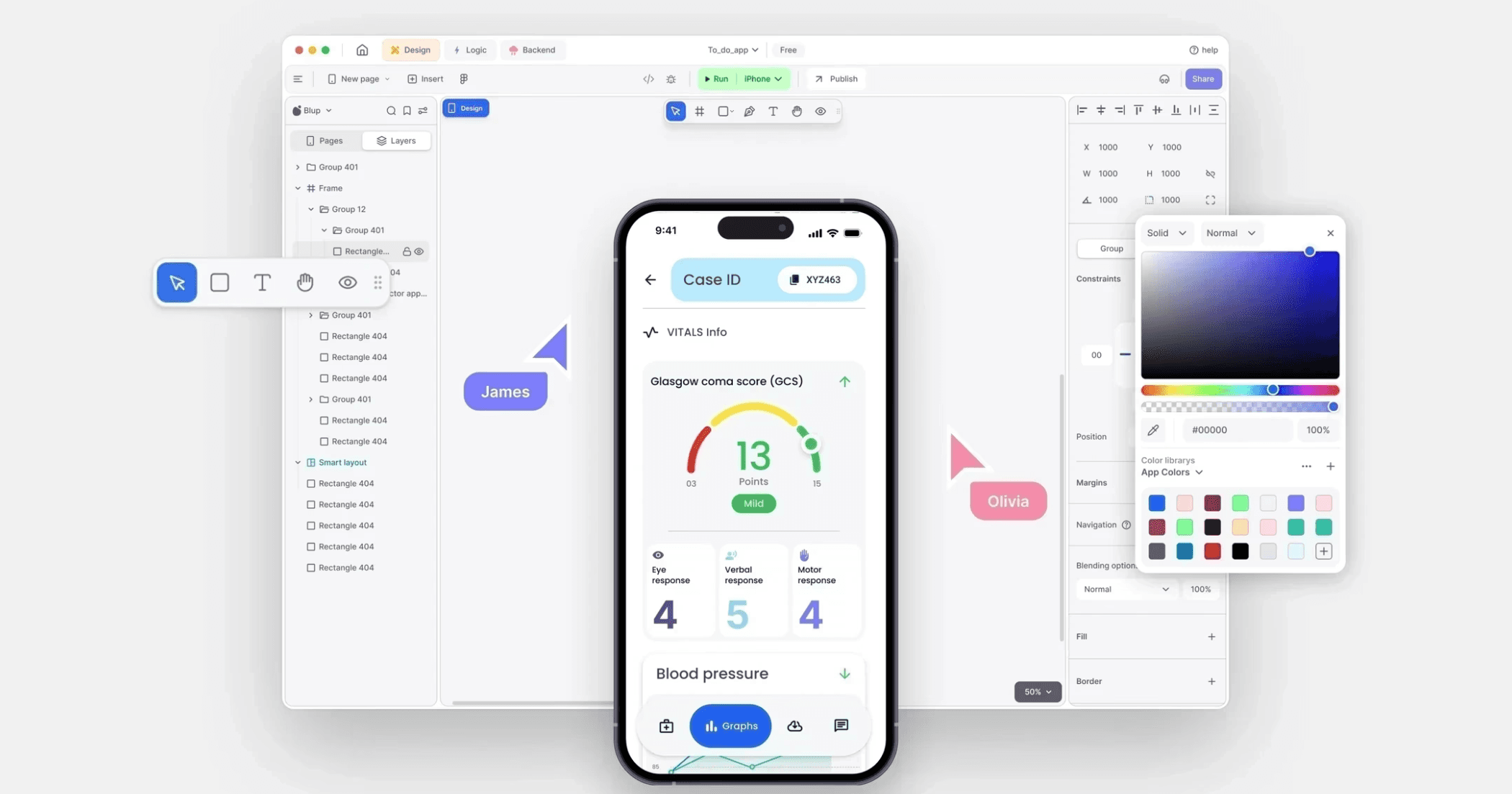
Introduction to Blup
Blup is a low-code development tool designed to simplify and accelerate the app development process. It enables developers to create applications with minimal hand-coding, reducing both the time and cost associated with traditional app development methods.
Benefits of Using Blup
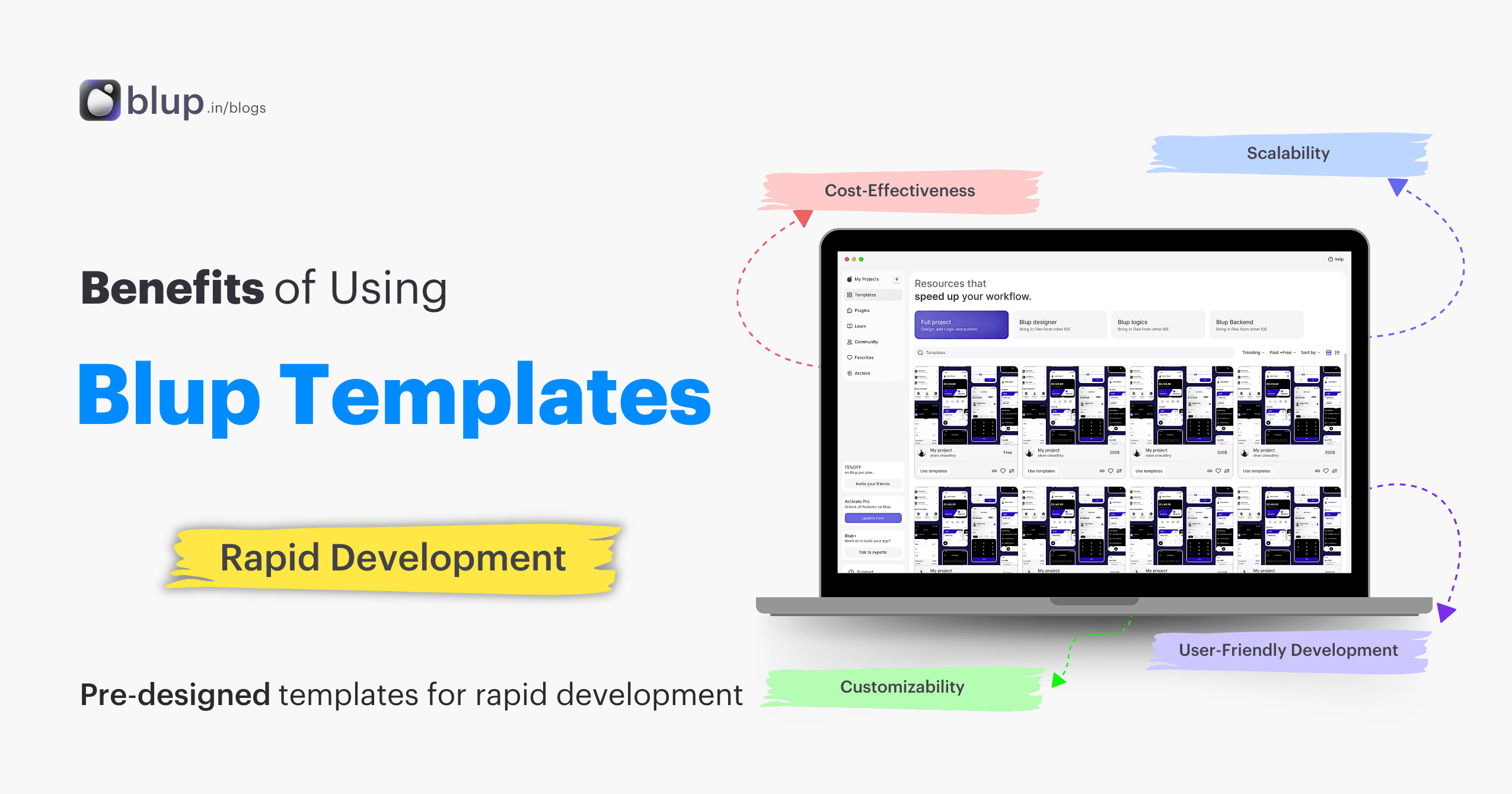
Cost-Effectiveness
By minimizing the need for extensive coding, Blup significantly reduces development costs. It allows businesses to build high-quality apps without the expense of a large development team.
Rapid Development
Blup’s intuitive interface and pre-built modules enable rapid app development. Developers can quickly assemble and customize applications, accelerating the time-to-market.
Flexibility and Scalability
Blup supports scalable architecture, allowing applications to grow and evolve with business needs. Its flexibility ensures that developers can easily modify and enhance the app as requirements change.
Rapid Development Process with Blup
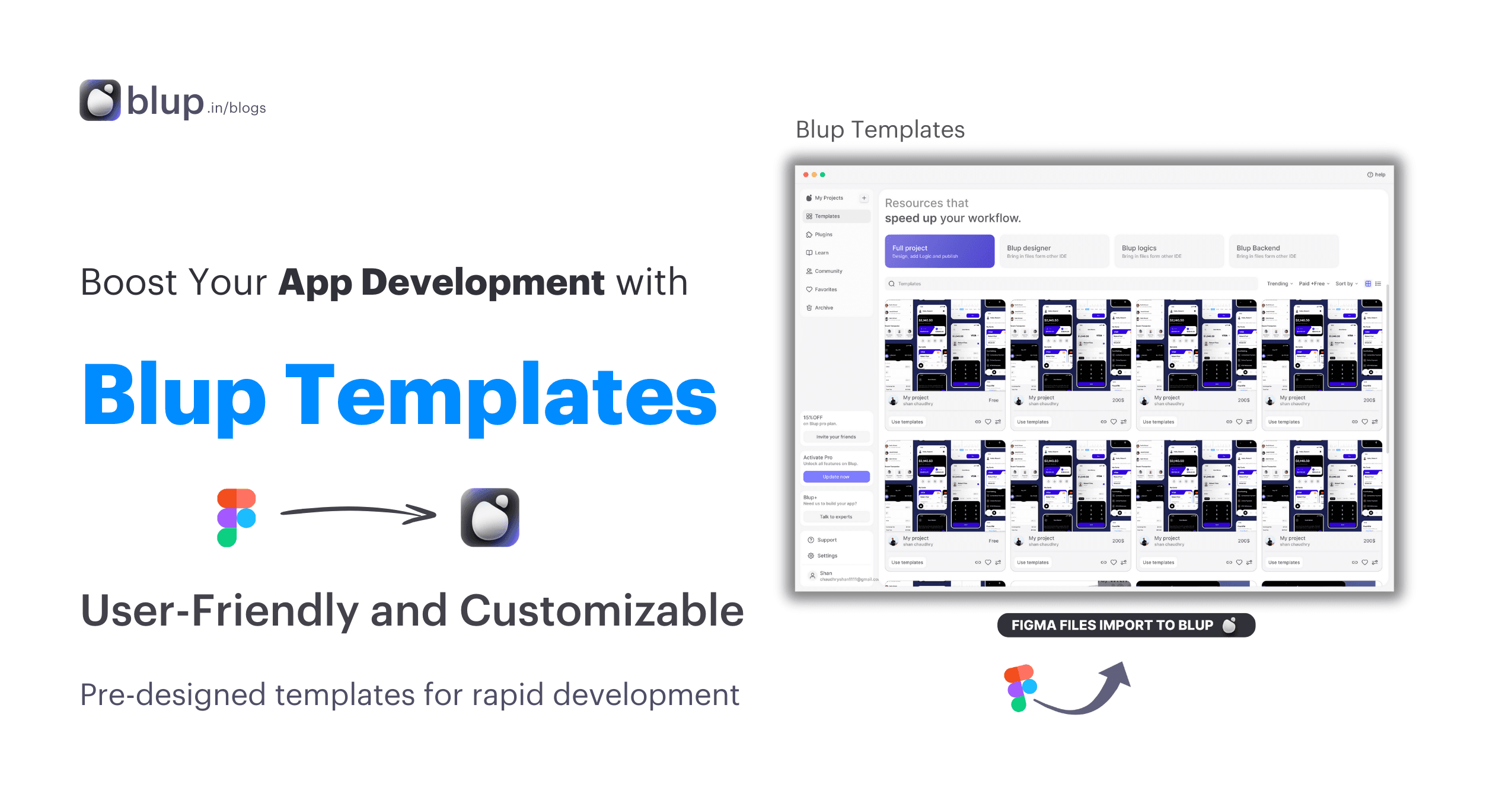
Drag-and-Drop Interface
Blup’s drag-and-drop interface simplifies the design process, enabling developers to quickly create and modify app layouts without extensive coding knowledge.
Pre-Built Templates
The tool offers a variety of pre-built templates that can be customized to meet specific business needs. These templates cover common functionalities, reducing development time.
Integration Capabilities
Blup seamlessly integrates with various third-party services and APIs, ensuring that the app can connect with other systems and tools required by the business.
To experience the benefits of Blup, download the tool and start developing your app today. Visit Blup's website for more information and resources on how to get started.

Introduction to Blup
Blup is a low-code development tool designed to simplify and accelerate the app development process. It enables developers to create applications with minimal hand-coding, reducing both the time and cost associated with traditional app development methods.
Benefits of Using Blup

Cost-Effectiveness
By minimizing the need for extensive coding, Blup significantly reduces development costs. It allows businesses to build high-quality apps without the expense of a large development team.
Rapid Development
Blup’s intuitive interface and pre-built modules enable rapid app development. Developers can quickly assemble and customize applications, accelerating the time-to-market.
Flexibility and Scalability
Blup supports scalable architecture, allowing applications to grow and evolve with business needs. Its flexibility ensures that developers can easily modify and enhance the app as requirements change.
Rapid Development Process with Blup

Drag-and-Drop Interface
Blup’s drag-and-drop interface simplifies the design process, enabling developers to quickly create and modify app layouts without extensive coding knowledge.
Pre-Built Templates
The tool offers a variety of pre-built templates that can be customized to meet specific business needs. These templates cover common functionalities, reducing development time.
Integration Capabilities
Blup seamlessly integrates with various third-party services and APIs, ensuring that the app can connect with other systems and tools required by the business.
To experience the benefits of Blup, download the tool and start developing your app today. Visit Blup's website for more information and resources on how to get started.

Introduction to Blup
Blup is a low-code development tool designed to simplify and accelerate the app development process. It enables developers to create applications with minimal hand-coding, reducing both the time and cost associated with traditional app development methods.
Benefits of Using Blup

Cost-Effectiveness
By minimizing the need for extensive coding, Blup significantly reduces development costs. It allows businesses to build high-quality apps without the expense of a large development team.
Rapid Development
Blup’s intuitive interface and pre-built modules enable rapid app development. Developers can quickly assemble and customize applications, accelerating the time-to-market.
Flexibility and Scalability
Blup supports scalable architecture, allowing applications to grow and evolve with business needs. Its flexibility ensures that developers can easily modify and enhance the app as requirements change.
Rapid Development Process with Blup

Drag-and-Drop Interface
Blup’s drag-and-drop interface simplifies the design process, enabling developers to quickly create and modify app layouts without extensive coding knowledge.
Pre-Built Templates
The tool offers a variety of pre-built templates that can be customized to meet specific business needs. These templates cover common functionalities, reducing development time.
Integration Capabilities
Blup seamlessly integrates with various third-party services and APIs, ensuring that the app can connect with other systems and tools required by the business.
To experience the benefits of Blup, download the tool and start developing your app today. Visit Blup's website for more information and resources on how to get started.

Introduction to Blup
Blup is a low-code development tool designed to simplify and accelerate the app development process. It enables developers to create applications with minimal hand-coding, reducing both the time and cost associated with traditional app development methods.
Benefits of Using Blup

Cost-Effectiveness
By minimizing the need for extensive coding, Blup significantly reduces development costs. It allows businesses to build high-quality apps without the expense of a large development team.
Rapid Development
Blup’s intuitive interface and pre-built modules enable rapid app development. Developers can quickly assemble and customize applications, accelerating the time-to-market.
Flexibility and Scalability
Blup supports scalable architecture, allowing applications to grow and evolve with business needs. Its flexibility ensures that developers can easily modify and enhance the app as requirements change.
Rapid Development Process with Blup

Drag-and-Drop Interface
Blup’s drag-and-drop interface simplifies the design process, enabling developers to quickly create and modify app layouts without extensive coding knowledge.
Pre-Built Templates
The tool offers a variety of pre-built templates that can be customized to meet specific business needs. These templates cover common functionalities, reducing development time.
Integration Capabilities
Blup seamlessly integrates with various third-party services and APIs, ensuring that the app can connect with other systems and tools required by the business.
To experience the benefits of Blup, download the tool and start developing your app today. Visit Blup's website for more information and resources on how to get started.
Conclusion
Conclusion
Conclusion
Conclusion
Recap
Low-cost app development is a practical and effective strategy for startups and small businesses. By examining successful case studies like Trucker Link and Kode Blue, we can identify key strategies and best practices that contribute to cost-efficient app development.
Final Thoughts
Budget-friendly app development fosters innovation and growth, enabling businesses to compete in the digital marketplace without incurring prohibitive costs. By focusing on core functionalities, leveraging open-source tools, and engaging in iterative development, businesses can create impactful applications within budget constraints.
Next Steps
If you are considering app development, explore low-cost strategies and consider implementing them in your projects. By adopting these approaches, you can achieve significant results without overspending, driving your business toward success in the competitive app market.
Recap
Low-cost app development is a practical and effective strategy for startups and small businesses. By examining successful case studies like Trucker Link and Kode Blue, we can identify key strategies and best practices that contribute to cost-efficient app development.
Final Thoughts
Budget-friendly app development fosters innovation and growth, enabling businesses to compete in the digital marketplace without incurring prohibitive costs. By focusing on core functionalities, leveraging open-source tools, and engaging in iterative development, businesses can create impactful applications within budget constraints.
Next Steps
If you are considering app development, explore low-cost strategies and consider implementing them in your projects. By adopting these approaches, you can achieve significant results without overspending, driving your business toward success in the competitive app market.
Recap
Low-cost app development is a practical and effective strategy for startups and small businesses. By examining successful case studies like Trucker Link and Kode Blue, we can identify key strategies and best practices that contribute to cost-efficient app development.
Final Thoughts
Budget-friendly app development fosters innovation and growth, enabling businesses to compete in the digital marketplace without incurring prohibitive costs. By focusing on core functionalities, leveraging open-source tools, and engaging in iterative development, businesses can create impactful applications within budget constraints.
Next Steps
If you are considering app development, explore low-cost strategies and consider implementing them in your projects. By adopting these approaches, you can achieve significant results without overspending, driving your business toward success in the competitive app market.
Recap
Low-cost app development is a practical and effective strategy for startups and small businesses. By examining successful case studies like Trucker Link and Kode Blue, we can identify key strategies and best practices that contribute to cost-efficient app development.
Final Thoughts
Budget-friendly app development fosters innovation and growth, enabling businesses to compete in the digital marketplace without incurring prohibitive costs. By focusing on core functionalities, leveraging open-source tools, and engaging in iterative development, businesses can create impactful applications within budget constraints.
Next Steps
If you are considering app development, explore low-cost strategies and consider implementing them in your projects. By adopting these approaches, you can achieve significant results without overspending, driving your business toward success in the competitive app market.
Table of content
© 2021-25 Blupx Private Limited.
All rights reserved.
© 2021-25 Blupx Private Limited.
All rights reserved.
© 2021-25 Blupx Private Limited.
All rights reserved.



